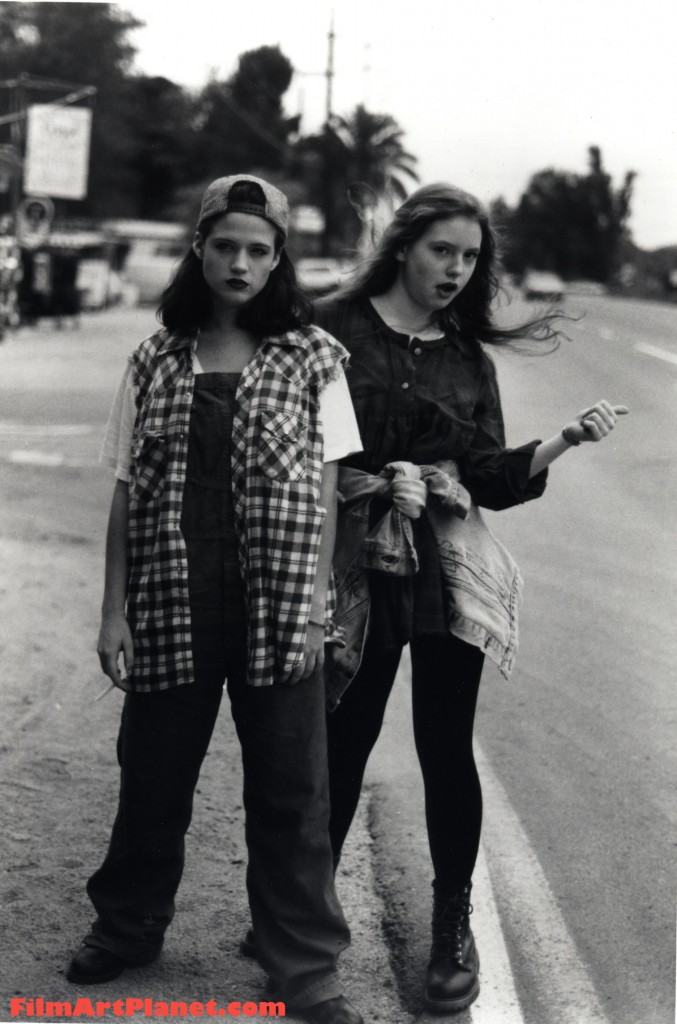‘Fun’ Aims to Make Sense of the Senseless
LOS ANGELES TIMES – MOVIE REVIEW
‘Fun’ Aims to Make Sense of the Senseless
by KEVIN THOMAS, Times staff writer
“Fun’ is how two pretty teenagers describe their fatal stabbing of a kindly elderly grandmother who extended her hospitality to them.
Bonnie (Alicia Witt), the 14-year-old strawberry blonde whodid the actual stabbing, is capable of feeling pity for her victim (Ania Suli) and her family. But, no hypocrite she, Bonnie does not deny to her dark-haired pal-15-year-old Hillary (Renee Humphrey), who held down their frail victim—that she certainly did enjoy doing it. She admits she’s even proud of herself.
A cautionary tale–and not an exploitation picture—adapted by James Bosley from his play, which in turn was, not surprisingly, based on a true incident, “Fun” is a thoroughly riveting experience that doesn’t tell us anything new about disaffected youth but does get inside these kids’ twisted psyches.
It’s a kind of “Heavenly Creatures” —low-budget, no-frills, American-style. Bosley and his dynamic producer – director Rafal Zielinski don’t send any messages, they just tell it like it. Yet the implications of their story are as dire as they are inescapable and wearyingly familiar: Turning loose young people from profoundly dysfunctional families into an open, impersonal, violence-saturated society like ours is an invitation to disaster; and far too many people are bring into this world children they are either unwilling or incapable of raising in a responsible fashion. In an exceptionally adroit adaptation of a play to the screen, Zielinski and Bosley tear right into their story. Documentary-like black-and-white sequences open the film with the girls arrival at L.A.’s Juvenile Hall. and Zielinski establishes a rhythmic pace, cutting between a newsmagazine reporter, John (William R. Moses), trying to get Hillary to open up while a counselor, Jane (Leslie Hope), attempts to communicate with the hyperkinetic Bonnie.
Gradually, Zielinski further intercuts flashbacks in color, revealing step-by-step the girls’ meeting and leading up to the killing.
In similar ways John and Jane are determined pros at interrogation. What emerges after much emotional fireworks is that from their point of view the seemingly senseless killing—the victim indeed picked at random—made perfect sense to the perpetrators.
Bonnie and Hillary meet while hitchhiking and are at once over- whelmed by their recognition of themselves in each other, followed by mutual onrush of the love they clearly had been deprived of their entire lives. In their ensuing celebratory mood of exhilaration and liberation, they almost unconsciously, in their pursuit of fun, move toward an act that will exorcise for them a lifetimes worth of rage at chronic abuse, neglect and deprivation. “Fun” therefore does make sense of that which is so easily described as senseless.
In doing so it gives an extraordinary opportunity In its actors It is amazing that two actresses as young am Witt and Humphrey are able to sustain such a high emotional pitch throughout the film, and for their efforts they were rewarded with a special jury recognition for acting at the Sundance Film Festival. No less impressive, however, are Moses, who manages to make John a tenacious yet fundamentally decent journalist, and especially Hope, whose Jane is a woman who has survived her own terrible childhood and is dedicated to helping girls as troubled as she once was—at no small ongoing cost to herself. “Fun” looks great, thanks to Jens Sturup’s bold, jarring camerawork, and boasts a rightly intense score by Marc Tschantz.
